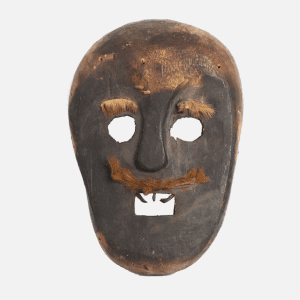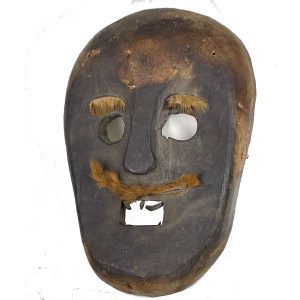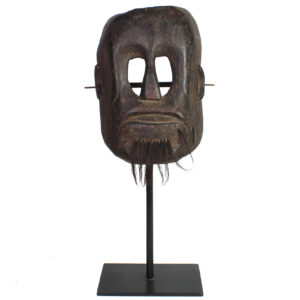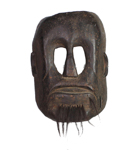Vintage Spirit Ancestor Mask with Hair, Indonesia, Timor (1211YKM) $495
$495.00H: 12.5″ W: 8.625″ D: 2.75″ | FREE SHIPPING!
Timor masks like this are rare and characterized by large roughly cut eyes, the absence of some teeth and the remaining ones being menacing. They are stored in the rafters above the house hearth accounting for their smoky black color. Often decorated with animal hide with hair, the facial pieces have either not darkened fully in the rafters or, when placed on top of each other, did not darken evenly. Frequently a bit threatening due to the black color, missing teeth and their frequent lack of balance, these ancestral masks are used in offering rituals designed to drive off malevolent spirits.



